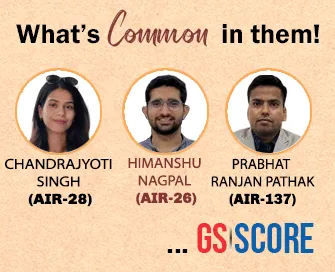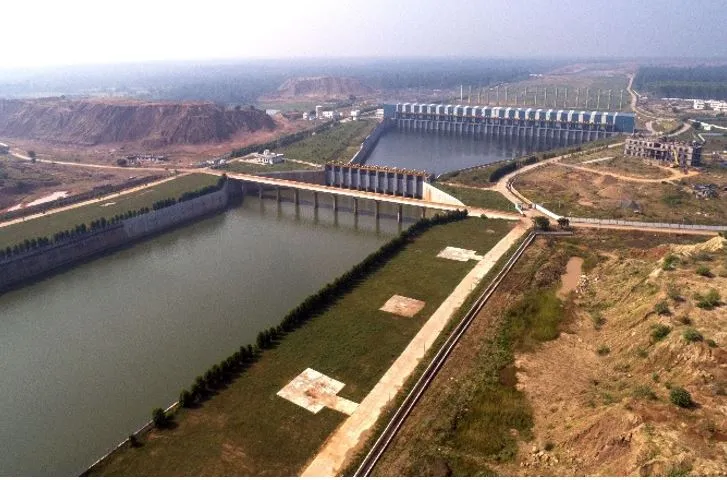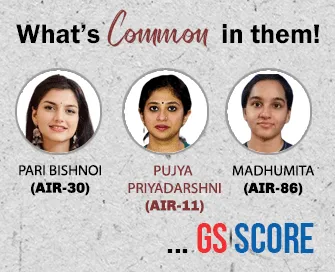

21st May 2025 (13 Topics)
Mains Issues
A rare 16th-century sculpture and inscription discovered near Chandrashekhara Temple in Guttal village, Haveri district (Karnataka) has brought to light the extraordinary humanitarian story of Marulayya, a man who performed last rites for over 6,000 unclaimed bodies during a devastating famine and epidemic in 1539. This unique inscription was studied and revealed by Dr. R Shejeshwara, Director, Karnataka State Department of Archaeology, Museums and Heritage, Kamalapura-Hampi.
Unique Discovery and its Context
- Historical Context:
- The inscription dates to Bhadrapada Shukla Panchami, Vikari Samvatsara (August 18, 1539 CE) — during the reign of Achyutaraya, ruler of the Vijayanagara Empire. This period witnessed a severe famine and probable outbreak of epidemic in the Haveri region.
- Location and Identification: It is found near Chandrashekhara Temple in Guttal village, Haveri district, the stone had been long overlooked despite being noted in academic theses and the Dharwad Gazetteer. It was not until the inscription was fully deciphered and contextually understood by Dr. Shejeshwara and his team that its true importance emerged.
- Sculptural Representation:
The stone sculpture portrays Marulayya in a solemn yet powerful pose:- Bearded and with sacred ash on his forehead
- Holding a bamboo basket (jalle) with two corpses, one in each hand
- Carrying a chaamara (ceremonial fan) in one hand
- A Shiva Linga is carved next to him, sanctifying the act
Vijayanagara Empire (Reign of Achyutaraya):
|
- Act of Compassion and Service:
Marulayya carried and performed final rites for 6,307 unclaimed bodies — an act unprecedented in documented global history, especially captured in such sculptural and epigraphic detail. - Nature of the Deed:
The inscription does not portray Marulayya’s act as boastful. Instead, it is recorded as an act of punya (meritorious service) dedicated to his overlord Pattada Timmaswamy — suggesting a deeply rooted cultural and spiritual sense of duty. - Inscription Details:
The stone carries 33 lines in old Kannada script: - 20 lines on the right side
- 13 lines on the left side
These lines provide precise historical details including date, event, and individuals involved. - Cultural and Ethical Legacy: The site is now being viewed as a monument to selfless service, breaking from conventional themes of heroism based on war or power and highlighting ordinary human virtue in extreme adversity.
Historical Significance and Future Preservation
- Rare Combination of Inscription and Sculpture: It is unparalleled globally to find an instance where such a large-scale humanitarian act — not political or royal in nature — is immortalised with both inscription and sculpture.
- Academic and Cultural Impact: The discovery is expected to reframe local and regional histories, offering insight into the socio-cultural values of the Vijayanagara period, where even the actions of non-royal individuals were deemed worthy of preservation.
- Preservation Efforts: The Karnataka State Department of Archaeology has documented the site in detail and expressed intent to preserve the stone for public viewing and academic research.
- Research Collaboration: The discovery was made possible through the efforts of Dr. Ravikumar K. Navalagund and Dr. Chamaraj Kammar, who assisted Dr. Shejeshwara in fieldwork.
Epigraphy and Hero Stones in Karnataka
|
PYQ:Safeguarding the Indian art heritage is the need of the moment. Discuss. (2018). |


Mains Issues
Context
The Supreme Court of India, in a recent judgment, has restored the mandatory requirement of 3 years of law practice for candidates applying to the Civil Judge (Junior Division) posts across India.
Background of the Issue:
- Pre-2002: The Supreme Court had mandated 3 years of law practice for entry into judicial services.
- 2002 Order: This condition was removed to attract bright young law graduates and make judicial service more appealing.
- This decision was based on the recommendations of the Shetty Commission (1996), which aimed to improve service conditions for the judiciary.
Key Developments in 2024 Judgment:
- Petitioner: All India Judges Association approached SC to restore the earlier practice.
- Bench: Headed by CJI Bhushan R Gavai, with Justices A G Masih and K Vinod Chandran.
- SC Observation: Recruitment of fresh law graduates “has not been successful” — they lack:
- Practical knowledge of courts,
- Understanding of litigation,
- Sensitivity to human problems.
- Order Highlights:
- Only a practicing lawyer can understand the “intricacies of litigation” and justice delivery.
- States & High Courts directed to amend recruitment rules within 3 months.
- Recruitment already notified will not be affected. The new rule applies to future recruitments only.
Experience Certification Mechanism:
- Candidates must produce:
- Certificate from a lawyer with at least 10 years of Bar practice.
- The certificate must be endorsed by a Principal Judicial Officer.
- High Court/Supreme Court practitioners need a certificate endorsed by a judge-attested senior lawyer.
- Experience counted from provisional registration, formal only after All India Bar Examination clearance.


Mains Issues
Context
India has launched an international diplomatic outreach effort, post-Operation Sindoor, to counter global narratives about cross-border terrorism and reinforce its stance on national security. This is being done through multi-party parliamentary delegations visiting several countries.
Multi-party Delegations:
- 7 delegations comprising 51 political leaders, including both NDA and non-NDA members.
- It is led by MPs like Shrikant Eknath Shinde (Shiv Sena), Bansuri Swaraj (BJP), Sasmit Patra (BJD), etc.
- The countries being visited include UAE, Congo, Sierra Leone, Liberia, and 33 others globally.
Objectives of the Delegation:
- It highlights India’s stance on terrorism, particularly cross-border terrorism.
- To counter Pakistan’s global narrative by providing evidence-backed details of terror sponsorship.
- To present India's security and peace strategy post-Operation Sindoor.
- To reiterate India’s identity as a peace-loving but assertive nation in matters of sovereignty.
Diplomatic Strategy
- Backed by a dossier on Pakistan's terror links, including:
- 2008 Mumbai attacks
- Pahalgam and Pulwama attacks
- Links to 9/11 and London Bombings (2005).
- Meetings scheduled with:
- Lawmakers and ministers
- Think tanks and policymakers
- Indian diaspora
- Foreign Secretary Vikram Misri briefed delegations on key messaging.
Strategic and Diplomatic Significance
1. India’s Assertive Diplomacy- India shift from passive diplomatic protest to proactive narrative-setting.
- It aligns with India’s “new normal” of military and diplomatic retaliation post-terror attacks (e.g., Balakot airstrike).
- Unique in showcasing bipartisan consensus on national security.
- It strengthens India's diplomatic credibility by transcending domestic politics.
- The outreach includes engaging with global civil society and Indian diaspora.
- It provides opportunity to shape global perceptions in India’s favour.
PYQ:
|


Mains Issues
Context
Between 2023 and 2025, India witnessed significant fluctuations in inflation trends driven by global events (war, El Niño), volatile food and fuel prices, and external sector pressures. In response, the RBI adopted a cautious monetary stance, despite calls to cut interest rates, sparking a wider debate on the effectiveness of monetary policy in addressing supply-driven inflation. As inflation moderates in early 2025, aided by favourable monsoons, softening crude prices, and rupee stabilization, the policy landscape shows signs of change.
Inflation Trends and Monetary Policy Outlook in India (2023–2025):
- Monetary Policy Stance (2023–2025)
- The RBI maintained the repo rate at 6.5% from Feb 2023 to Feb 2025 to control inflation, despite political and economic pressure to ease rates.
- Recent cuts in February and April 2025 signal a potential shift, enabled by improved macroeconomic stability.
- Diverging Inflation Components:
- While headline CPI inflation averaged 5.2%, food inflation (CFPI) remained elevated at 7.6%, driven by supply shocks.
- Core inflation stayed more stable at 4.1%, reflecting subdued demand-side pressures but recently rose to 4.2%, exceeding RBI’s target.
- Major Supply-Side Shocks
- Inflation in 2022–2023 was driven by Russia-Ukraine war-induced agri-price surges and global supply chain disruptions.
- The El Niño of 2023–24 caused deficient rainfall, impacting agricultural output and keeping food inflation high until early 2025.
- Recent Softening of Inflation (2025):
- In April 2025, CFPI fell to 1.8%, headline CPI to 3.2%—both their lowest in years—due to improved crop output and seasonal factors.
- Rising core inflation now poses a challenge, suggesting inflation is shifting from food-based to non-food components.
- Agricultural Turnaround and Weather Patterns:
- The end of El Niño and a forecasted mild La Niña with above-normal monsoons (per IMD) is improving agricultural output.
- A strong kharif and rabi harvest in late 2024 and early 2025 has eased food supply and inflationary pressures.
- Global and External Sector Influence:
- FAO food index dropped to 128.3 (April 2025), down from the 2022 peak, aiding global food price correction.
- Brent crude oil prices declined to $65/barrel, lowering fuel inflation. Rupee stabilized at ?85.5/$, containing imported inflation.
- Capital Flows and Forex Reserves
- FPI outflows from Oct 2024–Feb 2025 (~$22.7 billion) reversed in May with net inflows of $1.3 billion.
- Forex reserves recovered to $690.62 billion, boosting investor confidence and stabilizing currency markets.
- Impact of Global Trade Reorientation
- Trump-era tariffs in the U.S. diverted Chinese and Vietnamese exports toward India, enhancing imported disinflation.
- The Indian government imposed anti-dumping duties to protect domestic producers without stoking inflation.
- Policy Implications for RBI:
- With food inflation easing and external risks stabilizing, RBI is now more flexible to consider rate cuts.
- However, core inflation above 4% may limit aggressive monetary easing, necessitating a calibrated approach.
What is Monetary Policy?
Objectives of Monetary Policy in India
|


Prelims Articles
Context
In response to the lessons from the COVID-19 pandemic, member states of the World Health Organization (WHO) have adopted a landmark WHO Pandemic Agreement at the 78th World Health Assembly in Geneva. This legally binding resolution aims to strengthen global pandemic preparedness, ensure equitable access to medical resources, and prevent future health emergencies.
About the WHO Pandemic Agreement
- Objective:
To prevent and respond effectively to future pandemics by strengthening international cooperation, ensuring equitable access to health tools, and creating a fairer global health security framework. - Legal Basis:
This is the second international legal agreement negotiated under Article 19 of the WHO Constitution, the first being the Framework Convention on Tobacco Control (2003). - Key Features:
- Pathogen Access and Benefit Sharing (PABS) System:
Pharmaceutical companies involved in this system will provide 20% of their real-time production (vaccines, diagnostics, and therapeutics) to WHO to ensure equitable and timely distribution during a pandemic. - Equity in Access:
It emphasis on public health need-based distribution, especially prioritizing developing countries. - Implementation Mechanism:
A dedicated Intergovernmental Working Group (IGWG) will draft and negotiate the detailed PABS framework. The final plan will be reviewed in the next World Health Assembly. - Commitment to Multilateralism:
It recognizes that safeguarding public health, science, and economies requires global cooperation and shared accountability.
- Pathogen Access and Benefit Sharing (PABS) System:
- Significance:
- A proactive and structured response framework to avoid repeat global disruptions as seen during COVID-19.
- Strengthens WHO's leadership in coordinating international health emergencies.
- Establishes a precedent for future pandemic preparedness agreements based on science, equity, and collaboration.
Major Initiatives of WHO
|


Prelims Articles
Context
The Kaleshwaram Lift Irrigation Project (KLIP) is under scrutiny for alleged irregularities and structural issues, leading to the formation of a Judicial Inquiry Commission. Understanding the scale and significance of KLIP is essential for assessing the broader governance and infrastructure management challenges in India.
Kaleshwaram Lift Irrigation Project (KLIP):
- Location: Constructed on the Godavari River in Kaleshwaram, Bhupalpally district, Telangana.
- Purpose: Multi-purpose project designed for irrigation, municipal water supply, and drinking water needs in 20 of the 31 districts in Telangana, including Hyderabad and Secunderabad.
- Scale:
- World’s largest multi-stage lift irrigation project.
- Covers ~45 lakh acres of farmland.
- Water lifted across various stages using massive pump houses and pipelines.

Technical and Geographical Features:
- Source River: Begins at the confluence of the Pranahita and Godavari Rivers.
- Pranahita Sub-Basin: Formed by tributaries like Wardha, Painganga, and Wainganga, contributing to the 7th largest drainage basin in the Indian subcontinent.
- Infrastructure Details:
- Comprises 7 major links and 28 project packages.
- Spans approximately 500 km across 13 districts.
- Associated canal network exceeds 1,800 km, enabling extensive water distribution.
Water Allocation and Usage:
- Total Water Capacity: Aims to lift and utilize 240 TMC (Thousand Million Cubic Feet) of water.
- Usage Breakdown:
- Irrigation for agriculture.
- Drinking water for villages.
- Municipal supply for Hyderabad.
- Industrial use in the region.


Prelims Articles
Context
In March 2025, a record-breaking arribada (mass nesting event) of over seven lakh Olive Ridley turtles (Lepidochelys olivacea) was observed at Rushikulya beach, Odisha. While this event was celebrated as a sign of ecological recovery, it also raised significant concerns among conservationists regarding the long-term sustainability of such mass nesting and the unintended consequences of human interventions.
About Olive Ridley Turtles:
- Scientific Name: Lepidochelys olivacea
- Conservation Status: Vulnerable (IUCN Red List)
- Global Distribution: They are found in warm tropical and subtropical waters, with primary nesting sites along the Pacific coasts of Mexico and Central America.
- Indian Context: Odisha is a critical nesting site, with three major rookeries: Gahirmatha, Devi, and Rushikulya.
- Nesting Behavior and Ecology:
- Arribada: A unique mass nesting phenomenon where thousands of female turtles come ashore simultaneously to lay eggs.
- Philopatry: Turtles return to the beaches where they hatched, guided by the Earth’s geomagnetic field.
- Environmental Triggers: Nesting site selection is influenced by factors such as cold-core eddies (nutrient-rich water currents), beach slope, salinity, rainfall, and predation risk.
- Sex Determination: Temperature-dependent; higher sand temperatures result in a higher proportion of female hatchlings.
- Key Nesting Sites in Odisha:
-
- Gahirmatha Beach: It is located between the Brahmani and Baitarani river mouths.
- Devi River Mouth – It is approximately 100 km south of Gahirmatha.
- Rushikulya River Mouth – Around 320 km south of Gahirmatha.
PYQ
1. Consider the following statements: (2019)
Which of the statements given above are correct?
|


Prelims Articles
Context
NASA will conduct the Flight Readiness Review for the Axiom Mission 4 (Ax-4) on June 8, 2025, which will be piloted by Indian astronaut Group Captain Subanshu Shukla. The mission, launching from Kennedy Space Center, Florida, is bound for the International Space Station (ISS). This marks India’s first crewed mission to the ISS and involves extensive international collaboration.
What is Ax-4 Mission?
- Ax-4 is a crewed space mission to the ISS using a SpaceX Falcon 9 rocket and Dragon spacecraft.
- The crew consists of:
- Pilot: Group Captain Subanshu Shukla (India)
- Commander: Peggy Whitson (USA)
- Mission Specialists: S?awosz Uzna?ski-Wi?niewski (Poland) and Tibor Kapu (Hungary).
integration of the Dragon spacecraft with the Falcon 9 rocket is underway.
International Collaboration and Research
- NASA and ISRO will jointly conduct five scientific investigations and two outreach programs during Ax-4.
- ISRO and the European Space Agency (ESA) signed an agreement for cooperation on astronaut training, mission execution, and microgravity research during the mission.
- Indian-led microgravity experiments shortlisted for the ISS include:
- Comparative growth and proteomics responses of cyanobacteria on urea and nitrate in microgravity.
- Impact of microgravity on growth and yield parameters of food crop seeds.
- Additional joint studies on human research and technology demonstration will be conducted by ISRO and ESA.
- ISRO is also pursuing collaborations with other space agencies for microgravity research during Ax-4.


Prelims Articles
Context
On May 20, 2025, India lost one of its most distinguished astrophysicists, Jayant Vishnu Narlikar, who passed away at the age of 87 in Pune. Narlikar was renowned for his groundbreaking work in cosmology, especially for developing an alternative theory of gravitation with British scientist Fred Hoyle. His passing marks the end of an era in Indian space science and scientific communication.
Key Contributions and Significance
- Alternative to Big Bang Theory:
He developed the Hoyle–Narlikar Theory of Gravitation, an alternative to the Big Bang model, which introduced concepts like "continuous creation" and challenged prevailing cosmological beliefs. This brought global attention to Indian contributions in astrophysics. - Founder of IUCAA (1988):
He established the Inter-University Centre for Astronomy and Astrophysics (IUCAA) in Pune, which became a hub for advanced astronomical research in India. - Scientific Communication:
- Narlikar was a prolific science communicator, writing books, essays, and science fiction in English and Marathi.
- He believed that science belonged to everyone, not just academics — he popularized complex physics for lay audiences.
- Education and Collaboration:
- Educated at Cambridge University, where he collaborated with Fred Hoyle.
- Their work challenged orthodox scientific views and expanded the boundaries of cosmological inquiry.
Big Bang Theory:The Big Bang Theory is the leading explanation about how the universe began. It proposes that the universe originated from an extremely hot and dense singularity around 13.8 billion years ago, and has been expanding ever since. Key Points
Supporting Evidence
|


Prelims Articles
Context
The life and death of stars are crucial for understanding the evolution of the universe. Stars produce the elements essential for life through nuclear fusion and distribute them during their deaths. Depending on their mass, stars may end as white dwarfs, neutron stars, or undergo supernovae, contributing to cosmic chemical enrichment and the formation of new stars and planets.
Stellar Lifespan:
- Stars, though seemingly eternal, have finite lifespans determined primarily by their mass.
- Their lifecycle is governed by the balance between:
- Gravitational collapse (inward force)
- Pressure from nuclear fusion (outward force)
Nuclear Fusion: The Source of Stellar Energy:
- In the stellar core, hydrogen nuclei fuse into helium under extreme temperature and pressure.
- This process releases tremendous energy that supports the star against gravitational collapse.
- In 1938, Hans Bethe formulated the fusion mechanisms powering stars, earning the Nobel Prize in Physics.
Death of Low to Medium Mass Stars (Like the Sun)
- When hydrogen in the core is exhausted:
- Fusion slows down, and the core contracts under gravity.
- If core temperature exceeds ~100 million Kelvin, helium fusion begins, producing carbon and oxygen.
- Once helium is also exhausted:
- The outer layers are ejected gently, forming a planetary nebula.
- The remaining core becomes a white dwarf:
- Extremely dense and hot.
- Roughly Earth-sized.
- Composed primarily of carbon and oxygen.
- Nearly 95% of stars in a typical galaxy end their lives as white dwarfs.
PYQ1. With reference to the ‘Proxima Centauri’, consider the following statements:
|


Editorials
Context
The current shift in US foreign policy under Donald Trump’s second presidential term has raised concerns in India. His recent comments on Kashmir and Pakistan, lack of structured foreign policy process, and unpredictable leadership style are disrupting long-established strategic understandings between India and the US. This calls for a measured and resilient Indian diplomatic response.
Changing Dynamics Under Triumph Second Term:
- Erosion of Past Strategic Understandings: Trump’s remarks have undermined longstanding bilateral norms, especially on non-intervention in the Kashmir issue, reversing a two-decade-old consensus across US administrations.
- Breakdown of Institutional Policymaking: Unlike his first term, Trump now operates with minimal institutional inputs—many top diplomatic positions remain vacant, and policy is driven solely by presidential instinct.
- Personal Interests Influencing Policy: There are unverified claims of Trump family’s business ties in Pakistan’s crypto sector, pointing to a disturbing overlap between personal business and state interests in shaping foreign policy.
India’s strategic Claim and Response:
- Experience in Crisis Management: India has previously managed major crises in US relations, including during Clinton’s Kashmir focus and the nuclear sanctions era, and is equipped to respond without panic.
- Avoiding Counterproductive Public Reactions: Delhi is avoiding public confrontations or rebuttals, reflecting confidence in its status as the world’s fourth-largest economy, and engaging with Washington on specific merits of each issue.
- Expanding Outreach within the US System: India plans to intensify engagement with US Congress, civil society, and business lobbies to bypass executive volatility—a strategy successfully used by China.
Strategic Diversification and Internal Reforms
- Strengthening Non-US Partnerships: India is building deeper ties with Europe, especially countries like France, Denmark, and Greece, which have supported India’s stance on Kashmir and broader global issues.
- Aligning with Disenchanted US Allies: With Trump’s policies disrupting alliances across Europe and Asia, India finds shared strategic space with traditional US partners seeking to diversify relations.
- Betting on Domestic Capabilities: India’s ultimate shield lies in economic and technological self-reliance—successes like Operation Sindoor highlight the need for long-overdue structural reforms to build internal strength.
Practice Question:
Q. "Critically examine the strategic imperatives for India to maintain stable relations with the United States amid unpredictable leadership. How can internal capacity-building and diversification of global partnerships insulate India from external shocks?"


Editorials
Context
In January 2025, Accredited Social Health Activists (ASHAs) in Bengaluru staged a protest demanding fixed wages and formal recognition as government workers. This brings renewed attention to the long-standing demands of Scheme-Based Workers (SBWs) such as Anganwadi Workers (AWWs), Anganwadi Helpers (AWHs), Mid-Day Meal Workers (MDMWs), and ASHAs for worker status, fair wages, and social security.
Role and Scale of Scheme-Based Workers (SBWs)
- Magnitude of Workforce: Over 60 million workers are employed under various central schemes like ICDS (1975), NRHM, and Mid-Day Meal Scheme, with major groups being AWWs (13.5 lakh), AWHs (9.2 lakh), ASHAs (10.5 lakh), and MDMWs (25.1 lakh).
- Crucial Public Role: These workers serve as the backbone of the welfare state, responsible for childcare, nutrition, early education, maternal health, and school enrolment across India.
- Recognition but No Rights: Despite global and national praise (including by the Prime Minister and WHO), they are denied basic labour rights, minimum wages, and social security.
Struggles and Mobilisation Efforts:
- Methods of Protest: SBWs have pursued strikes, legal challenges, and social dialogue to demand formal worker identity and remuneration parity.
- Trade Union Support: Central trade unions like AITUC, BMS, and CITU have mobilised SBWs, resulting in large-scale agitations like the 13-day Anganwadi strike in Kerala (March 2025).
- State Suppression: States like Maharashtra invoked Essential Services Maintenance Act (2017) to curb Anganwadi protests, ironically recognizing their work as “essential” without conferring corresponding rights.
Legal and Policy Developments:
- Judicial Interventions: In Ameerbi (2006), the SC denied Anganwadis “worker” status, but later relief came in Maniben (2022) where SC granted them gratuity rights under the Payment of Gratuity Act, 1972.
- 2024 Gujarat HC Ruling: In Adarsh Gujarat Anganwadi Union vs State of Gujarat, the Court directed regularisation of AWWs/AWHs as Class III/IV employees and mandated minimum wages.
- Policy Paralysis: The 45th Indian Labour Conference unanimously recommended treating SBWs as “workers” with full labour benefits, but the Centre has delayed action, citing financial constraints and potential ICDS privatisation.
Practice Question:
Q. Despite being the backbone of India’s social welfare delivery, Scheme-Based Workers (SBWs) continue to be denied formal recognition and labour rights. Critically examine the role of the judiciary, trade unions, and the State in shaping the labour identity and rights of SBWs. Suggest a policy framework for their integration into the formal workforce.


Editorials
Context
India and the United Kingdom have finalised a landmark Free Trade Agreement (FTA), offering zero-duty access to nearly 99% of Indian tariff lines and significantly boosting bilateral trade and investment. This FTA marks India’s strategic shift from protectionist trade policies to value-based global trade leadership.
Strategic Gains for Indian Goods and Services Exports
- Tariff Elimination for Indian Exports: The FTA removes up to 12% tariffs on Indian exports such as textiles, apparel, marine products, leather, and toys, placing India on par with competitors like Bangladesh and CPTPP countries in the UK market.
- Balanced Market Access: India has allowed phased, duty-free access to 85% of UK products over 10 years, while strategically protecting sensitive sectors like dairy, edible oils, smartphones, and medical devices, ensuring domestic industries are shielded.
- Services Sector Advantage: Indian IT, telecom, education, and finance services gain enhanced UK market access, with new provisions for talent mobility and professional recognition, giving a global edge to Indian service providers.
Structural & Institutional Reforms in the FTA:
- Double Contribution Convention: The agreement includes a first-of-its-kind social security waiver, eliminating UK social security contributions for Indian professionals on temporary assignments, reducing overhead costs for Indian companies.
- Recognition of Qualifications: Mutual recognition of professional qualifications for Indian architects, accountants, engineers, and educators facilitates seamless entry and employment in the UK.
- Inclusion of ESG and Compliance Norms: The FTA incorporates chapters on labour rights, environmental protection, gender equity, and anti-corruption signalling India’s readiness for global trade standards based on ethics and sustainability.
Long-term Opportunities and Industry Responsibilities:
- Joint IP and R&D Ecosystem: The FTA promotes co-manufacturing, joint research, and innovation by combining UK strengths in design and India's scale and talent, driving forward value chain integration.
- Market Strategy Realignment: Indian firms must adopt UK-specific strategies focused on brand localisation, regulatory compliance, and premium product positioning to sustain competitiveness.
- Alignment with Viksit Bharat Vision: The FTA aligns with India’s long-term economic vision of transforming from a cost-driven export base to a high-value, brand-driven global economic leader.
Practice Question:
Q. "The India-UK Free Trade Agreement (FTA) not only enhances market access but also reflects India’s transition towards value-based global trade. Critically analyse the potential of this FTA in reshaping India’s export ecosystem and strengthening bilateral economic ties."



